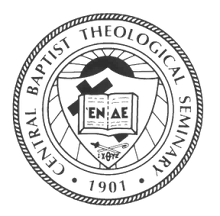Epiphany marks the ending of the Gospel focus on Jesus as child and inaugurates the season of his ministry, beginning with his baptism. The interplay of the lectionary texts, Genesis 1:1-5 and Mark 1:4-11 (as well as the Prologue of John), illumine our understanding of the true light coming into the world. God, the One in whom there is no darkness, is the source of the light of creation and the light of redemption.
God speaks light into being at the beginning of creation, and without its priority nothing else could be created. It is understandable that light has symbolized the meaning of the Christ-event for people walking in darkness. As Wendy Wright observes in The Vigil: “The power of the symbol was not lost on most generations of believers who lived closer than we do to the truth that we are all ultimately dependent upon the sun for warm, vision, and light itself” (152). Linking God’s creation of Day, suffused with light, with the Sun of Righteousness, is a logical extension in the Scriptures. Indeed, the whole narratival arc of the Bible is about moving from darkness to light as the “dawn from on high breaks upon us.”
These ringing words, commonly read on the Feast Day of Epiphany, declare God’s illuminating promise for the world:
Arise, shine out, for your light has come!
the glory of YHWH is rising upon you!
Though darkness still covers the earth
and dark clouds enshroud the nations,
upon you YHWH now dawns,
and God’s glory will be seen among you! (Isaiah 61:1-2).
The baptism of Jesus as portrayed in the Gospel of Mark is spare; Jesus came from Nazareth to be baptized by John. Two aspects of this complex event point to the transcendence of this simple act: the descent of the Holy Spirit in the form of a dove, and the Voice identifying the Son as beloved of God. The same voice as in the beginning now calls forth Lux Aeterna (eternal light) as it shines forth in one born of woman. God’s glory is seen among us—in the form of one like us.
In the Eastern church, the primary meaning of the baptism of Christ is not that he needed cleansing, but to portray the re-consecration of creation. His light would shine into the dark places of human violence, pride, and shame, and call persons to live as christophers, bearing the light of Christ. Further, his coming presages the reality that all creation will be drawn into the ultimate cosmic redemption disclosed by Christ.
We, too, have seen his star, and reflect his glory by shining forth justice and mercy in a world dimmed by sin. How needed in our time is the radiance of the true light that comes in Christ to make all things new!
Molly T. Marshall
Central believes that Holy Scripture tells the story of God’s great plan for a beloved world. Come study with us! Learn more about such an opportunity by continuing to visit our website.

No comments:
Post a Comment